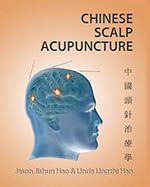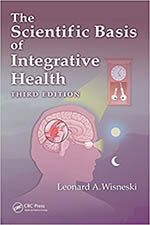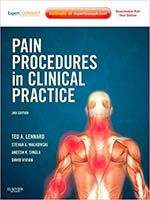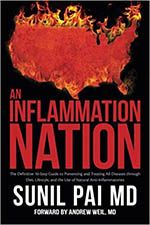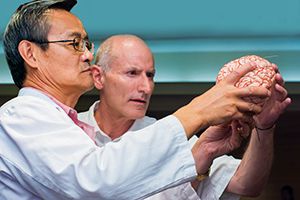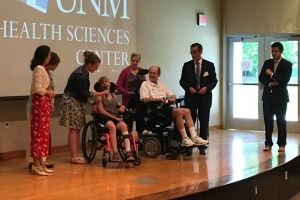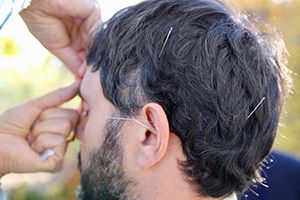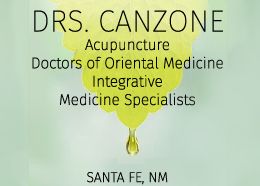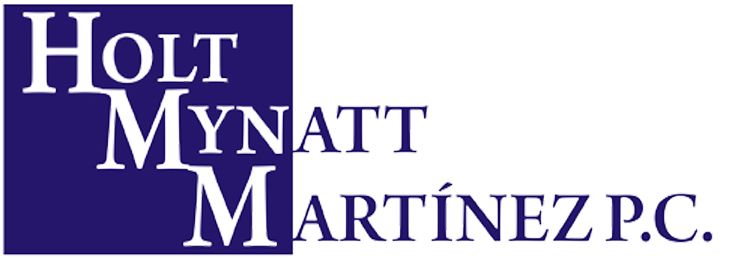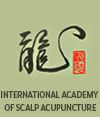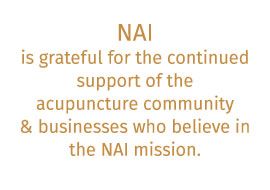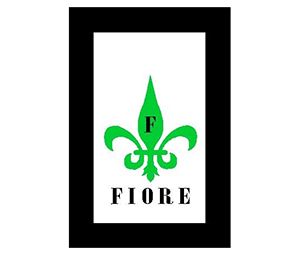The History of Scalp Acupuncture
As the use of Traditional Chinese Medicine (TCM) and evidence of its effectiveness continues to grow worldwide, it is being increasingly incorporated into the treatment of conventional biomedical diagnoses. TCM is widely accepted for the treatment of acute and chronic pain, a neurological condition. Other neurological conditions for which TCM may be effective include Complex Regional Pain Syndromes, Traumatic Brain Injuries, Stroke, Multiple Sclerosis (MS), Parkinson’s and Cerebral Palsy.
A technique that is being increasingly applied within the scope of neurology is Scalp Acupuncture. In Asia, the use of Scalp Acupuncture, also known as Neuroacupuncture, has been used to treat neurological disorders for over 50 years. Animal studies and human case reports support its effectiveness for neurological disorders. Academic centers and hospitals, primarily in China but increasing in the USA and Europe, incorporate neuroacupuncture into the clinical treatment of neurologic disorders. Read more...
Following are studies that demonstrate the efficacy and/or effectiveness of acupuncture in treating the symptoms associated with neurologic diseases and the growing credibility of acupuncture.
Acupuncture's Increasing Credibility in Research and Clinical Settings
Starkey Jamie. Alternative and Complementary Therapies. February 2018, 24(1): 7-9.
Published in Volume: 24 Issue 1: February 1, 2018
Acupuncture and the Brain
Acupuncture Stimulation Induces Neurogenesis In Adult Brain.
Nam MH1, Ahn KS, Choi SH., Department of Pathology, College of Korean Medicine, Kyung Hee University, Seoul, Republic of Korea.
ABSTRACT: The discovery of adult neurogenesis was a turning point in the field of neuroscience. Adult neurogenesis offers an enormous possibility to open a new therapeutic paradigm of neurodegenerative diseases and stroke. Recently, several studies suggested that acupuncture may enhance adult neurogenesis. Acupuncture has long been an important treatment for brain diseases in the East Asia. The scientific mechanisms of acupuncture treatment for the diseases, such as Alzheimer's disease, Parkinson's disease, and stroke, have not been clarified yet; however, the neurogenic effect of acupuncture can be a possible reason. Here, we have reviewed the studies on the effect of stimulation at various acupoints for neurogenesis, such as ST36 and GV20. The suggested mechanisms are also discussed including upregulation of brain-derived neurotrophic factor, glial cell line-derived neurotrophic factor, basic fibroblast growth factor and neuropeptide Y, and activation of the function of primo vascular system.
Acupuncture Modulates Resting State Hippocampal Functional Connectivity In Alzheimer Disease
Wang Z1, Liang P2, Zhao Z1, Han Y3, Song H3, Xu J4, Lu J1, Li K5.
ABSTRACT: Our objective is to clarify the effects of acupuncture on hippocampal connectivity in patients with Alzheimer disease (AD) using functional magnetic resonance imaging (fMRI). Twenty-eight right-handed subjects (14 AD patients and 14 healthy elders) participated in this study. Clinical and neuropsychological examinations were performed on all subjects. MRI was performed using a SIEMENS verio 3-Tesla scanner. The fMRI study used a single block experimental design. We first acquired baseline resting state data during the initial 3 minutes and then performed acupuncture stimulation on the Tai chong and He gu acupoints for 3 minutes. Last, we acquired fMRI data for another 10 minutes after the needle was withdrawn. The preprocessing and data analysis were performed using statistical parametric mapping (SPM5) software. Two-sample t-tests were performed using data from the two groups in different states. We found that during the resting state, several frontal and temporal regions showed decreased hippocampal connectivity in AD patients relative to control subjects. During the resting state following acupuncture, AD patients showed increased connectivity in most of these hippocampus related regions compared to the first resting state. In conclusion, we investigated the effect of acupuncture on AD patients by combing fMRI and traditional acupuncture. Our fMRI study confirmed that acupuncture at Tai chong and He gu can enhance the hippocampal connectivity in AD patients.
Scalp Acupuncture
Effects of Scalp Acupuncture Versus Upper and Lower Limb Acupuncture on Signal Activation of Blood Oxygen Level Dependent (BOLD) fMRI of the Brain and Somatosensory Cortex
To cite this article: Seong-Uk Park, Ae-Sook Shin, Geon-Ho Jahng, Sang-Kwan Moon, and Jung-Mi Park. The Journal of Alternative and Complementary Medicine. November 2009, 15(11): 1193-1200. https://doi.org/10.1089/acm.2008.0602
Published in Volume: 15 Issue 11: November 18, 2009
ABSTRACT
Objective: The objective of this article is to investigate brain activity of scalp acupuncture (SA) as compared to upper and lower limb acupuncture (ULLA) using functional magnetic resonance imaging (fMRI).
Effect Of Scalp Acupuncture On The Expression Of NF-KappaB MRNA, COX-2 MRNA And Their Proteins In Rats With Acute Cerebral Ischemia-Reperfusion Injury
Zhou L1, Zhang HX, Wang Q, Liu LG, Yang X, Yang M, Liu YN, Li X.
ABSTRACT
Objective: To explore the possible mechanism of scalp acupuncture (SA) in relieving cerebral ischemia reperfusion (CI-R) injury.
Methods: Seventy male SD rats were randomized into sham-operation (sham, n = 10), model (n = 30) and SA (n = 30) groups. The later 2 groups were further divided into 24 h, 48 h and 72 h subgroups respectively, with 10 cases in each. CI-R model was established by middle cerebral artery occlusion (MCAO) and reperfusion. Electroacupuncture (2 mA, 2 Hz/100 Hz) was applied to “Dingnie Houxiexian” (MS 7) and “Dingnie Qianxiexian” (MS 6) for 30 min, once every 24 h. Changes of the animal behavior were observed by using neurological severity score (NSS), nuclear factor-kappa B (NF-kappaB) and cyclooxygenase (COX-2) contents and their mRNA expression were detected with enzyme-linked immunosorbent assay (ELISA) and polymerase chain reaction (PCR) techniques respectively.
Author Information: 1Department of Acu-morxibustion, Wuhan Hospital of Integrated Chinese & Western Medicine, Wuhan 430022, China. bluesea-zl2000@163.com
Cerebral Palsy
Treatment of 140 cerebral palsied children with a combined method based on traditional Chinese medicine (TCM) and western medicine
Zhou XJ, Zheng K., Affiliated Children’s Hospital, School of Medicine, Zhejiang University, Hangzhou 310003, China
ABSTRACT
Objective: To observe and evaluate a method that is effective and practical for treatment of cerebral palsied (CP) children in China. Method: The patient’s age and disease type and individual specific conditions were considered in choosing therapy methods accordingly: Chinese herbs, acupuncture, auricular seed pressure, point finger pressing, massage, orthopedic hand manipulation, physiotherapy, occupational therapy, language therapy, etc.
Clinical observation on treatment of clearing the Governor Vessel and refreshing the mind needling in neural development and remediation of children with cerebral palsy
Chin J Integr Med. 2013 Jul;19(7):505-9. doi: 10.1007/s11655-013-1504-9. Epub 2013 Jul 2.
Liu ZH1, Qi YC, Pan PG, Ma MM, Qian XG, Fu WJ.
ABSTRACT
Objective: To investigate the effects of clearing the Governor Vessel and refreshing the mind needling in neural development and remediation of children with cerebral palsy.
Stroke
The effects of acupuncture on cerebral blood flow in post-stroke patients: a randomized controlled trial.
Ratmansky M, Levy A, Messinger A, Birg A, Front L, Treger I. J Altern Complement Med. 2016;22(1):33–37.
ABSTRACT
Background/Objective: Stroke is a major cause of disability and death in the Western world. Studies have shown a direct relationship between specific mental and motor activity and changes in cerebral blood flow. Acupuncture is often used in post-stroke patients, but there is a lack of sham-controlled studies evaluating the effects of acupuncture on cerebral blood flow following a stroke. This pilot concept-assessment study sought to evaluate the effects of true acupuncture on cerebral blood flow velocity compared with sham acupuncture and lay a foundation for future work in this field.
Chinese Medicine Patterns in Patients with Post-Stroke Dementia
Nou-Ying Tang,1 Chung-Hsiang Liu,2 Hsu-Jan Liu,3 Tsai-Chung Li,4 Jui-Chen Liu,2 Ping-Kun Chen,2 and Ching-Liang Hsieh3,5,6,*
ABSTRACT: A stroke often results in post-stroke dementia, a rapid decline in memory and intelligence causing dysfunctions in daily life. The Chinese medicine doctor uses 4 examinations of inspection, listening, smelling, and feeling to determine the Chinese medicine pattern (CMP). Therefore, the purpose of the present study was to investigate the CMP in patients with post-stroke dementia. A total of 101 stroke patients were examined, consistent with the DSM IV diagnostic criteria of the American Psychiatric Association, as well as the National Institute of Neurological Disorders and Stroke-Association International pour Ia Recherche et I’Enseignement en Neurosciences vascular dementia diagnostic criteria of post-stroke dementia.
Acupuncture treatment on the motor area of the scalp for motor dysfunction in patients with ischemic stroke: study protocol for a randomized controlled trial.
Jun Wang, 1,2 Jian Pei, #1 Dhiaedin Khiati,3 Qinhui Fu,1 Xiao Cui,2 Yi Song,1 Minghang Yan,1 Lijun Shi,1 Yiwen Cai,1 and Yuhong Ma1
Author information ► Article notes ► Copyright and License information ►
ABSTRACT
Background: Scalp acupuncture has shown a remarkable treatment efficacy on motor dysfunction in patients with stroke in China, especially the motor area of Jiao's scalp acupuncture, which is the most widely used treatment. However, previous studies have summarized that the clinical curative effect of acupuncture treatment for stroke remains uncertain. Meanwhile, no randomized controlled trials on Jiao's scalp acupuncture have been performed. The aim of this study is to evaluate the efficacy and safety of Jiao's scalp acupuncture for motor dysfunction in ischemic stroke.
Acupuncture and Pain Relief
Acupuncture Induced Pain Suppression Opiod, Glutamate, Amino Butyric Acid, NaK Pump (See sidebar for download)
Springer International Publishing AG Part of Springer Science + Business Media
Y. Xia et al. (eds.), Current Research in Acupuncture, 37
ABSTRACT: The objective of our work is the elucidation of mechanisms underlying initiation, transmission and the final effects of acupuncture and moxibustion. In this chapter, we shall focus mainly on possible cellular events in tissue affected by Chinese medicine treatments using basically electrophysiological techniques combined with molecular biological and radioactive tracer techniques to measure activity of transmembrane transport.
In the first part we will review work of our laboratory suggesting that acupunctureinduced pain suppression involves interaction of d -opioid receptor (DOR) with the neurotransmitter transporters for glutamate (EAAC1), g -amino butyric acid (GAT1) and the sodium pump (Na + , K + -ATPase). Reduced activity of the transporters by co-expression of DOR resulted from intermolecular interaction with DOR. In addition, EAAC1 became stimulated in response to DOR activation, while GAT1 became inhibited. The Na + , K + -ATPase was not affected by DOR activation, but higher sensitivity to DOR agonist was found in response to sodium pump stimulation. Since endorphins are released in response to acupuncture, the effects described here may contribute to acupuncture-induced pain suppression.
Effect of Acupuncture on Blood Flow Velocity and Volume in Common Carotid and Vertebral Arteries in Migraine Patients (Purchase Study)
Kyu-Hyun Park, Hak-Jin Kim, Sun-Yong Baek, Byung-Mann Cho, and Tae-Woo Yoo.
ABSTRACT
Background: Acupuncture has been reported to be beneficial for both acute and chronic migraine, albeit controversies about efficacy exist. Migraine may be caused by an imbalance in blood flow; acupuncture manipulations may be able to restore the balance, thereby reducing various symptoms of migraine.
Objective: To study blood flow in extracranial arteries with a new protocol of flow quantification with fast-low angle shot after performing Korean Hand Acupuncture therapy on migraine patients.
Inhibition of ROS-induced p38MAPK and ERK activation in Microglia by Acupuncture relieves Neuropathic Pain after Spinal Cord Injury in Rats (Purchase Study)
Doo C Choi, Jee Y Lee, Eun J Lim, Hyung H Baik, Tae H Oh, Tae Y Yune
Age-Related and Brain Diseases Research Center, School of Medicine, Kyung Hee University, Seoul 130-701, Republic of Korea.
ABSTRACT
Background And Purpose: A noxious stimulus does not necessarily cause pain. Nociceptive signals arising from a noxious stimulus are subject to modulation via endogenous inhibitory and facilitatory mechanisms as they travel from the periphery to the dorsal horn or brainstem and on to higher brain sites. Research on the neural structures underlying endogenous pain modulation has largely been restricted to animal research due to the invasiveness of such studies (e.g., spinal cord transection, brain lesioning, brain site stimulation). Neuroimaging techniques (e.g., magnetoencephalography (MEG), positron emission tomography (PET) and functional magnetic resonance imaging (fMRI)) provide non-invasive means to study neural structures in humans. The aim is to provide a narrative review of neuroimaging studies related to human pain control mechanisms.
Pain Management With Acupuncture In Osteoarthritis: A Systematic Review And Meta-Analysis (See sidebar for download)
BMC Complement Altern Med. 2014 Aug 23;14:312. doi: 10.1186/1472-6882-14-312.
Manyanga T1, Froese M, Zarychanski R, Abou-Setta A, Friesen C, Tennenhouse M, Shay BL.
Author Information : 1Department of Community Health Sciences, University of Manitoba, Winnipeg, Manitoba, Canada. ummanyan@myumanitoba.ca.
ABSTRACT
Background: The utility of acupuncture in managing osteoarthritis symptoms is uncertain. Trial results are conflicting and previous systematic reviews may have overestimated the benefits of acupuncture.
Methods: Two reviewers independently identified randomized controlled trials (up to May 2014) from multiple electronic sources (including PubMed/Medline, EMBASE, and CENTRAL) and reference lists of relevant articles, extracted data and assessed risk of bias (Cochrane’s Risk of Bias tool). Pooled data are expressed as mean differences (MD), with 95% confidence intervals (CI) (random-effects model).
Results: We included 12 trials (1763 participants) comparing acupuncture to sham acupuncture, no treatment or usual care. We adjudicated most trials to be unclear (64%) or high (9%) risk of bias. Acupuncture use was associated with significant reductions in pain intensity (MD -0.29, 95% CI -0.55 to -0.02, I2 0%, 10 trials, 1699 participants), functional mobility (standardized MD -0.34, 95% CI -0.55 to -0.14, I2 70%, 9 trials, 1543 participants), health-related quality of life (standardized MD -0.36, 95% CI -0.58 to -0.14, I2 50%, 3 trials, 958 participants). Subgroup analysis of pain intensity by intervention duration suggested greater pain intensity reduction with intervention periods greater than 4 weeks (MD -0.38, 95% CI -0.69 to -0.06, I2 0%, 6 trials, 1239 participants).
Conclusions: The use of acupuncture is associated with significant reductions in pain intensity, improvement in functional mobility and quality of life. While the differences are not as great as shown by other reviews, current evidence supports the use of acupuncture as an alternative for traditional analgesics in patients with osteoarthritis.
Acupuncture And Related Techniques For Postoperative Pain: A Systematic Review Of Randomized Controlled Trials, (See sidebar for download)
Oxford Journals Medicine & Health BJA Volume 101, Issue 2 Pp. 151-160.
1. Y. Sun, T. J. Gan, J. W. Dubose and A. S. Habib*
2. + Author Affiliations: Department of Anesthesiology, Duke University Medical Center, Box 3094, Durham, NC 27710, USA
3. Department of Anesthesiology, Duke University Medical Center, Box 3094, Durham, NC 27710, USA
4. Corresponding author. E-mail: habib001@mc.duke.edu
ABSTRACT: Postoperative pain management remains a significant challenge for all healthcare providers. The objective of this systematic review was to quantitatively evaluate the efficacy of acupuncture and related techniques as adjunct analgesics for acute postoperative pain management. We searched the databases of Medline (1966–2007), CINAHL, The Cochrane Central Register of Controlled Trials (2006), and Scopus for randomized controlled trials (RCTs) using acupuncture for postoperative pain management. We extracted data about postoperative opioid consumption, postoperative pain intensity, and opioid-related side-effects. Combined data were analysed using a random effects model. Fifteen RCTs comparing acupuncture with sham control in the management of acute postoperative pain were included. Weighted mean difference for cumulative opioid analgesic consumption was −3.14 mg (95% confidence interval, CI: −5.15, −1.14), −8.33 mg (95% CI: −11.06, −5.61), and −9.14 mg (95% CI: −16.07, −2.22) at 8, 24, and 72 h, respectively. Postoperative pain intensity (visual analogue scale, 0–100 mm) was also significantly decreased in the acupuncture group at 8 and 72 h compared with the control group. The acupuncture treatment group was associated with a lower incidence of opioid-related side-effects such as nausea (relative risk, RR: 0.67; 95% CI: 0.53, 0.86), dizziness (RR: 0.65; 95% CI: 0.52, 0.81), sedation (RR: 0.78; 95% CI: 0.61, 0.99), pruritus (RR: 0.75; 95% CI: 0.59, 0.96), and urinary retention (RR: 0.29; 95% CI: 0.12, 0.74). Perioperative acupuncture may be a useful adjunct for acute postoperative pain management.

